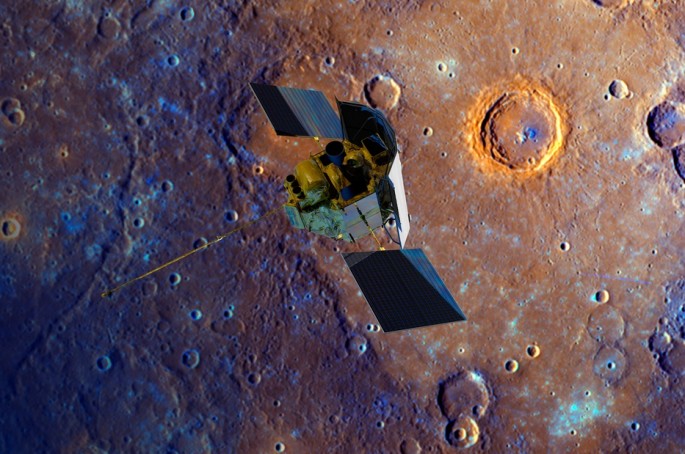After 10 years of exploring Mercury, NASA's Messenger spacecraft will plunge from its orbit and crash into the planet during its last, fiery flyby on April 30.
The probe arrived at the tiny world in March 2011 and will soon run out of fuel where it will inevitably crash into Mercury's scorching surface. To date, the spacecraft is just skimming the surface of the planet.
Messenger was launched in August 3, 2004 where the spacecraft orbited the sun 15 times over a period of seven years. This is only the second mission launched into Mercury that followed the Mariner 10 mission in 1974 and 1975. Messenger also exceeded its mission lifespan for three more years giving an unparalleled glimpse into the innermost planet of the solar system.
According to William McClintock of the Laboratory for Atmospheric and Space Physics from the Colorado University-Boulder, many did not believe that this spacecraft would reach Mercury or even gather pivotal data for four years during this supposed one year mission.
The Messenger mission revealed greater understanding of the tiny planet including its thin atmosphere called the exosphere that enshrouds it. This tenuous layer is apparently produced by micrometeorite impacts where astronomers believes that it could be unpredictable and unstable. However, researchers found out from Messenger's observations and data that this exosphere also goes through regular patterns much like the seasons on Earth.
While orbiting for four years, Messenger also revealed a massive iron core inside Mercury which orginated from carbon deposit from flying comets over the planet's surface. The mission also showed evidence of a million tons of ice that could be hidden inside the craters of the planet despite surface temperatures reaching 800 degrees Fahrenheit. Data also revealed that these craters were also once filled with lava.
NASA engineers have done everything they can including regular adjustments to the orbit of Messenger in order to delay its final descent. The last adjustment is set on April 24.
According to Daniel O'Shaughnessy who is a mission systems engineer from the Johns Hopkins University Applied Physics Laboratory, after this final maneuver, the team will declare that the Messenger ran out of propellant as this specific maneuver will deplete all the probe's remaining helium gas where the probe will plummet into an inevitable surface impact.



























